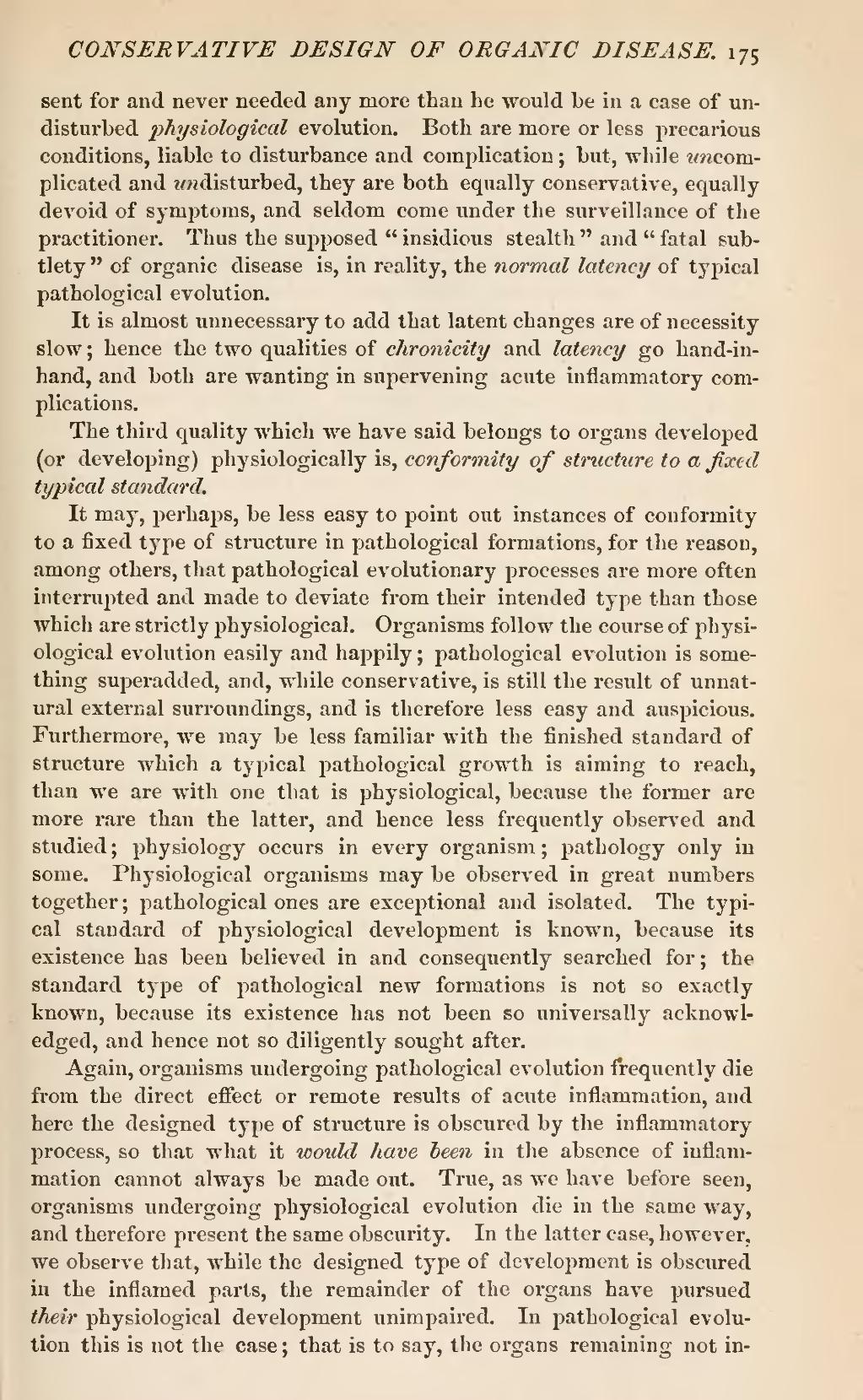sent for and never needed any more than he would be in a case of undisturbed physiological evolution. Both are more or less precarious conditions, liable to disturbance and complication; but, while uncomplicated and undisturbed, they are both equally conservative, equally devoid of symptoms, and seldom come under the surveillance of the practitioner. Thus the supposed "insidious stealth" and "fatal subtlety" of organic disease is, in reality, the normal latency of typical pathological evolution.
It is almost unnecessary to add that latent changes are of necessity slow; hence the two qualities of chronicity and latency go hand-in-hand, and both are wanting in supervening acute inflammatory complications.
The third quality which we have said belongs to organs developed (or developing) physiologically is, conformity of structure to a fixed typical standard.
It may, perhaps, be less easy to point out instances of conformity to a fixed type of structure in pathological formations, for the reason, among others, that pathological evolutionary processes are more often interrupted and made to deviate from their intended type than those which are strictly physiological. Organisms follow the course of physiological evolution easily and happily; pathological evolution is something superadded, and, while conservative, is still the result of unnatural external surroundings, and is therefore less easy and auspicious. Furthermore, we may be less familiar with the finished standard of structure which a typical pathological growth is aiming to reach, than we are with one that is physiological, because the former are more rare than the latter, and hence less frequently observed and studied; physiology occurs in every organism; pathology only in some. Physiological organisms may be observed in great numbers together; pathological ones are exceptional and isolated. The typical standard of physiological development is known, because its existence has been believed in and consequently searched for; the standard type of pathological new formations is not so exactly known, because its existence has not been so universally acknowledged, and hence not so diligently sought after.
Again, organisms undergoing pathological evolution frequently die from the direct effect or remote results of acute inflammation, and here the designed type of structure is obscured by the inflammatory process, so that what it would have been in the absence of inflammation cannot always be made out. True, as we have before seen, organisms undergoing physiological evolution die in the same way, and therefore present the same obscurity. In the latter case, however, we observe that, while the designed type of development is obscured in the inflamed parts, the remainder of the organs have pursued their physiological development unimpaired. In pathological evolution this is not the case; that is to say, the organs remaining not in-

